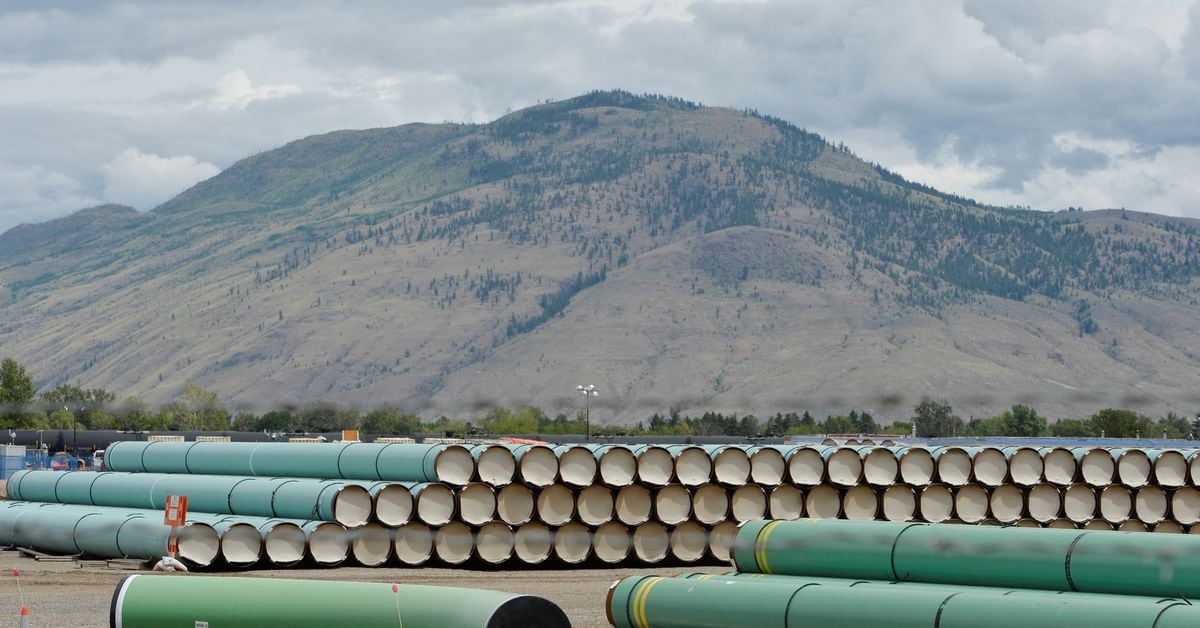
Canadian oil producers are bracing for further potential delays to the Trans Mountain pipeline expansion (TMX) that could cost them millions of dollars in lost revenues in coming months after they ramped up production ready to fill the expanded line, meant to unlock access to Asia.
Producers entered 2023 thinking the 590,000 barrel per day (bpd) expansion – nearly tripling the existing pipeline’s capacity – from Alberta’s landlocked oilfields to the Pacific Coast would be filling with oil by year-end – the last step before full operations commence.
However, the project, about 95% completed, has been beset by construction issues in British Columbia, stoking concerns among traders and analysts that its start will be delayed beyond the current target of late March 2024. In October, TMX said linefill would start in the first quarter and take up to seven weeks.
TMX now awaits another regulatory decision on a request that, if denied, could add 59 days to construction plans. That comes after changing some of its route and dealing with a work stoppage for environmental noncompliances. A decision is due imminently.
It is just the latest hurdle for the Canadian government-owned project after being plagued by years of regulatory delay, environmental opposition and massive cost overruns.
While over the years the pipeline’s start date has been moved further back, supply has kept coming. Further delays could force producers to accept lower prices for their crude and to put more barrels into storage to deal with a glut of oil stranded in Alberta while they wait for the pipeline to start.
TMX’s construction hold-ups already helped push the discount, or differential, on benchmark Western Canada Select (WCS) heavy crude to the U.S. benchmark crude futures close to $30 a barrel last month, the deepest level in a year.
WCS was last at a $23 a barrel discount, roughly $8 wider than average, according to brokerage CalRock. Light synthetic crude from the oil sands, another key Canadian grade, is trading close to its deepest discount since 2020.
With Canada exporting around 3.8 million bpd via pipelines, each additional dollar the discount widens amounts to millions in lost revenues for oil companies, analysts say.
“There seems to be growing nervousness in the market that the start date will be later,” said RBN Energy analyst Martin King. “More people are getting concerned that this is going to go beyond into the second quarter, maybe even the third.”
The blowout in WCS differentials also highlights how the troubled expansion, likely one of the last big oil pipeline projects to be built in Canada, continues to inflict pain even as it nears the finish line.
TMX’s construction budget has already quadrupled to C$30.9 billion ($22.75 billion), on which Canada is expected to have to take a significant write-down.
“It’s not just the cost of construction which is outrageous, but the impact on the Canadian economy of the (WCS) differential and oil production not getting to market,” said Heather Exner-Pirot, special adviser to the Business Council of Canada.
The concerns come as output in Canada, the world’s fourth-largest oil producer, climbs toward record levels, outpacing capacity on existing pipelines to the U.S.
Canada, produced 4.86 million bpd in 2022 and is forecast to hit 5.5 million bpd by 2030, according to Kevin Birn, chief analyst of Canadian oil markets at S&P Global.
Oil companies are expected to add a combined 375,000 bpd in 2023 and 2024 alone, and the coming winter months are typically peak production season in Canada.
Conventional oil and gas producers will drill 8% more wells in 2024 to take advantage of greater access to pipelines including Trans Mountain.
As production climbs, space is increasingly being rationed, or apportioned, for all shippers on the 3.1 million bpd Enbridge Inc (ENB.TO) Mainline system, which ships the bulk of Canada’s crude exports to the U.S.
Apportionment hit 35% and 28% on light and heavy oil pipelines respectively in December, Enbridge said, meaning more than a quarter of all barrels are being turned back. In August Mainline apportionment was zero.
In the past, Canadian companies have exported excess crude using railcars, despite the higher cost. Rail exports hit 145,000 bpd in September, nearly doubling from May, according to latest data from the Canada Energy Regulator.
Wider crude differentials indicate crude-by-rail levels increased to about 250,000-300,000 bpd in November, said James Davis, head of upstream oil at energy consultant FGE.
Crude-by-rail, however, is unlikely to bring big relief to Canadian producers.
Jesse Jones, head of North American upstream at Energy Aspects, said rail will not be able to ship all the barrels being pushed off pipelines by high apportionment.
Interviews with terminal operators and company filings also suggest the crude-by-rail industry has foundered in recent years and capacity will struggle to rise significantly.
Smaller players especially will be reluctant to sign commitments with TMX around the corner, Jones said.
“We’re getting more enquiries, but we move substantially less than we moved a couple of years ago, everybody is moving less,” said John Zahary, CEO of Altex Energy, a terminal operator shipping around 10,000 bpd.
Shipments will be limited by a railcar shortage and uncertainty over the profitability of long-term crude-by-rail economics, said Kent MacDougall, chief commercial officer at Torq Transloading, which ships about 10,000 bpd.
“It’s challenging and it’s cumbersome to do rail for spot deals,” he said.







